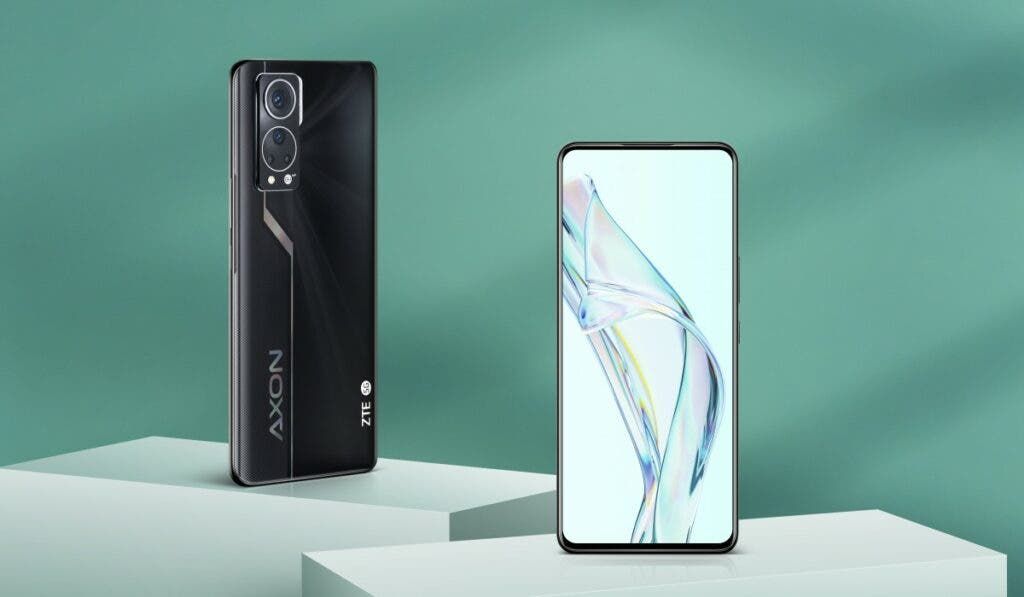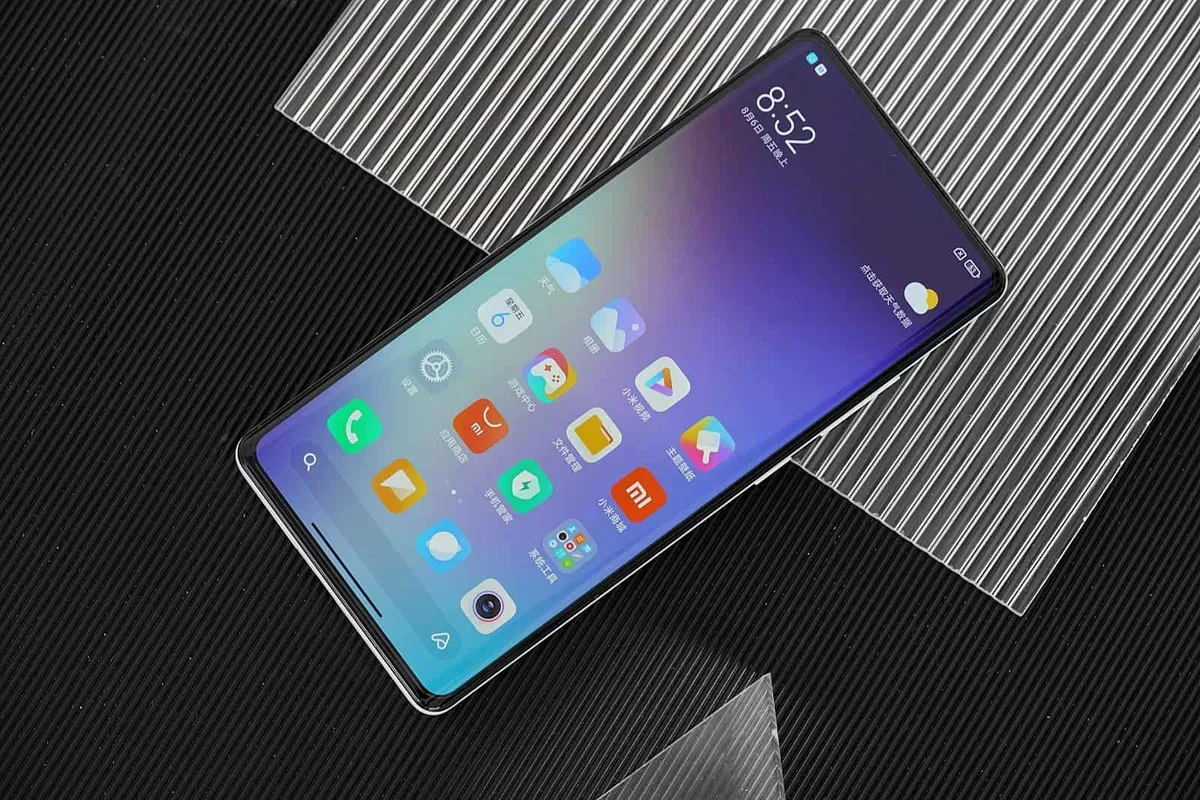Over the past few years, there has been significant development in the smartphone industry. For the past three years, smartphone manufacturers have been working on making the display full-screen. In order to achieve a full-screen smartphone, we have seen many solutions in time past. We have the notch design which was introduced with the iPhone X. Subsequently, we had other solutions like the water-drop display, punch-hole display, pop-up camera, magnetic-slide display, and so on. The notch, water-drop, and punch-hole camera design stood the test of time. However, the same can not be said of other solutions. Most recently, we have seen the development of under-display camera smartphones.

In all honesty, imperfection is beautiful in many cases, however, people always pursue perfection. Whether it is a notch design or any other solution, there are always some "deficiencies". Nevertheless, people are still searching for a full-screen design without deficiencies.
The pop-up, 360-degree rotating, and magnetic-slide solutions all use some sort of mechanical structure to achieve a full-screen display. However, either the cost, thickness, weight, or wear and tear was a problem.
Under-screen camera technology
As of now, we have a new technology that appears to solve the full-screen limitations and give users a true full-screen. This is the latest under-screen camera technology. As of now, only three manufacturers have launched smartphones with this technology. We have the likes of ZTE, Xiaomi, and Samsung which all launch smartphones with full-screen effects using this technology. Presently, there are four smartphones with under-screen camera technology in the smartphone industry. We have the ZTE Axon 20, ZTE Axon 30, Xiaomi Mi MIX4, and Samsung Galaxy Z Fold3.
However, the current prices of products that use under-screen cameras are still relatively high. Nevertheless, in the future, we may be able to get cheaper smartphones with this technology. While the ZTE Axon 20 and Axon 30 sell for $322 and $338 respectively, the Xiaomi Mi MIX 4 was released for $770. As for the Samsung Galaxy Z Fold3, the price of this device is $1799.99. It's important to note that all the prices above are the starting price of these smartphones. We can see that these devices are pretty expensive.

However, here are the top three reasons why in the next six months, we can get very cheap under-screen camera smartphones.
1. Gradual maturity of the technology
The first is that with the gradual maturity of technology, the yield rate of related screen panels continues to increase. This will eventually make the overall cost of the panel reduce with time. In fact, this is the main reason why under-screen camera smartphones will gradually decline in price. The technology is still in its infancy thus the production cost is high.
Just like the under-screen fingerprint sensor, as the technology continues to mature, the decentralization of functions is inevitable. Thus, users only have to wait for this technology to mature before they get cheaper options.
In terms of the under-screen camera technology, Chinese manufacturers are currently pumping in a lot of time and effort. This will bring more advantages to the smartphone industry. The development speed of the technology can be relatively faster, and consumers will have a faster time to enjoy the new technology.
2. Camera/screen effect is not top-notch
Presently, the under-screen camera products are struggling to balance the display effect and image output. However, with the current materials and technical display, the under-screen camera products are far from other solutions. They are inferior with respect to screen quality and image output. Nevertheless, their selling point is the absolute full-screen.
Lu Weibing, president of Xiaomi China and general manager of the Redmi brand, said that if you care about the effect of the front camera, it is better to choose a punch-hole screen product. This also means that in terms of the front camera, the under-screen camera solution is still very weak.
For such a product with a weak front camera and display, cost-effective products are more suitable to have this type of solution. Since the punch-hole and notch solutions are doing very well in the camera and screen departments, they will have an edge. If the under-screen camera technology becomes cheaper, many users will still buy them despite the shortcomings. Thus, it is most likely that this technology will reduce its price sooner or later.
3. Not suitable for flagships
Considering the current materials and technical issues, it is difficult for the screen under-camera products to compete with other solutions. In the future, it may be difficult to find this technology on regular flagships. Just like the pop-up camera solution, we will likely find this technology on mid-range and entry-level smartphones. However, it will be rarely seen on conventional flagship products. This is mainly due to the fact that when consumers buy conventional flagship products, they hope that it is a balanced product with no shortcomings in all aspects.
Conventional flagship smartphones are different from say the MIX and Fold series. While the MIX series emphasizes design, the Samsung Galaxy Z Fold series emphasizes the foldable screen. Thus, these smartphones have the leverage to be "poor" in a few aspects that it is not emphasizing. This is not the case with regular or conventional flagship smartphones. A regular flagship smartphone is not expected to have any shortcomings.
Conclusion
The on-screen camera technology is a great solution for solving the full-screen need of users. However, this technology has too many shortcomings that make it unsuitable for regular flagships. We believe that consumers prefer to experience this technology on low-priced products. As mentioned earlier, when technology continues to mature, decentralization of functions is inevitable. We believe that soon we will be able to buy under-screen camera products for less than $300. Just like the pop-up camera smartphones which now sell for less than $300, under-screen camera smartphones will most likely get to this point.
No doubt, the under-screen camera technology is a significant technological advancement. This technology allows us to see that a lot of advancements are possible in the industry. However, its performance is not just enough for the price tag. If we have low-priced under-screen smartphones, will you buy them? Let us know your thoughts in the comment section below






Place comments
0 Comments
You are currently seeing only the comments you are notified about, if you want to see all comments from this post, click the button below.
Show all comments